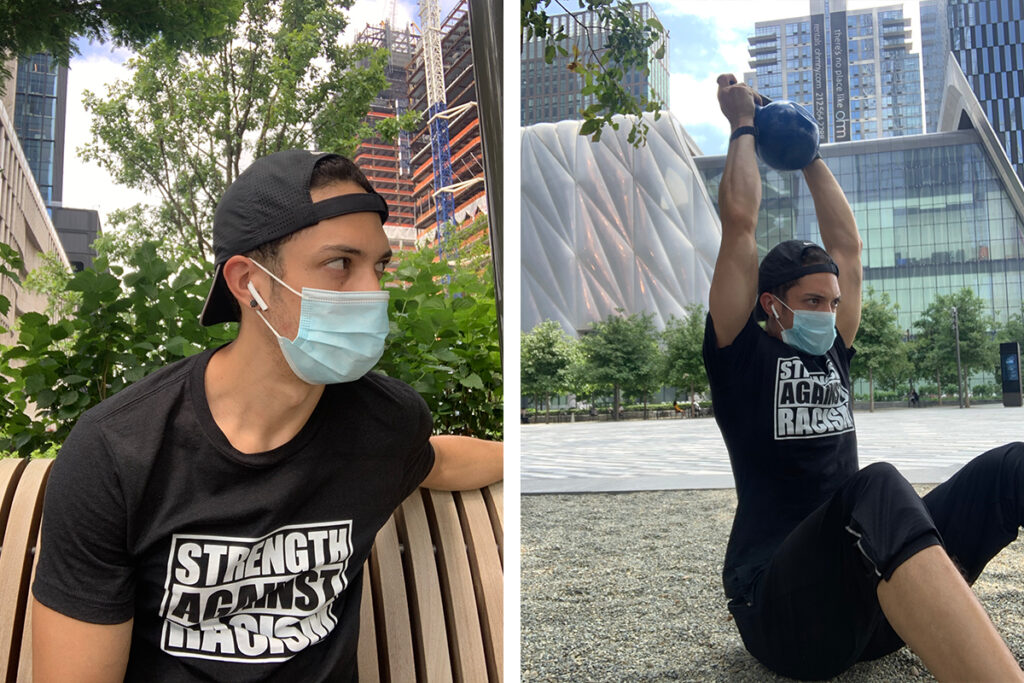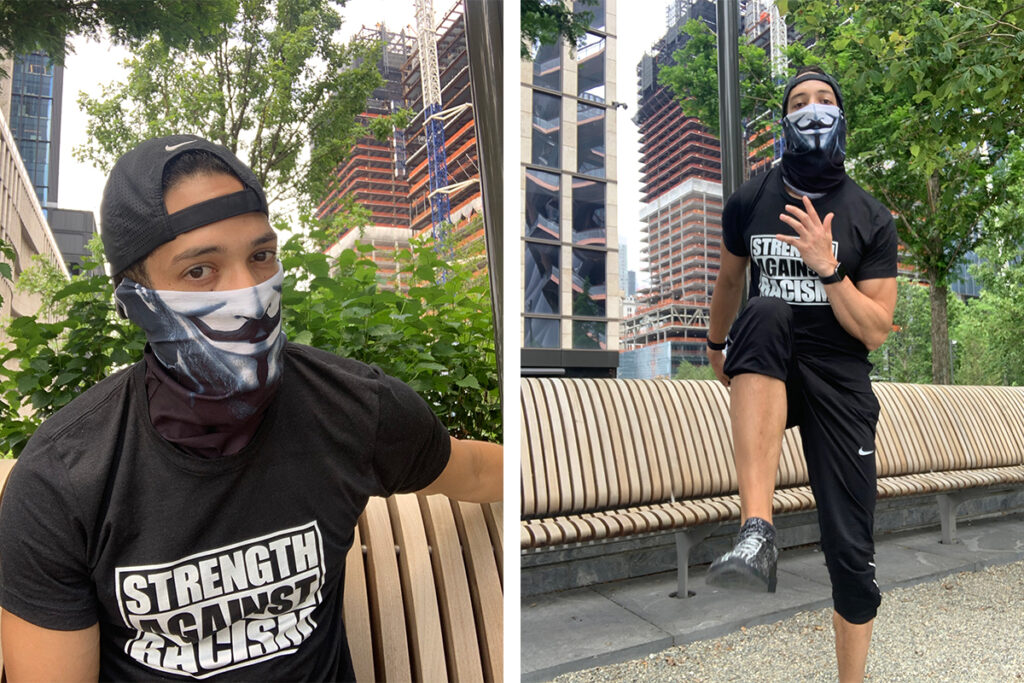With mask mandates becoming more and more prevalent, we took it upon ourselves to do some research on which masks are best for which workout. FHITpro Pierre shares his takeaways on proper breathing technique in five different mask types for working out. Read more from Pierre on how to get the most out of your outdoor workout while protecting yourself and others, below…
So, you’re going into month four of quarantine, and you’re still not sure which mask to exercise in. You’ve picked out the mask that goes well with your all-black outfits for grocery shopping and you have that bright, colorful one for parks days. But the question still remains, which am I wearing to workout in? Does the material actually matter? Should it be a bandana? An N-95, surgical, or neck gaiter? Just buy anything on Amazon? HELP?!?
Wearing masks at all times out in public spaces during the COVID-19 pandemic is vital for personal safety and for the safety of others. When we shop, when we converse, and when we workout. Yes, this may be an inconvenience for some, but the best thing we can do is make lemonade out of these lemons. Mask-wearing won’t be required forever, so let’s think of it as another phase or period of our training, or what I like to call: “The Season of Restricted Breathing and Working on Pulmonary Strength!”
Before we get into which mask is going to help you breathe the best, sweat the most, and look good with your Lulus, let’s talk about breathing. We are still completing the same task, the same way. You breathe in, and you breathe out. The only difference is you are forced to stay aware of your breathing while wearing a mask.

The Importance of Proper Breathing Technique
The act of breathing is thankfully an involuntary one, something we don’t have to think about. Still, as a young athlete, my mother was constantly giving me breathing advice from the sidelines for exercise-and-allergy-induced asthma. I struggled with learning proper breathing techniques despite my body being unwilling to cooperate. With some practice, I learned how to breathe deeply and slow my heart rate down.
We need to think about breathing with a purpose while wearing a face mask. Fun fact: Even during intense exercise the average human only uses about 70% of their lung capacity. So, that means we have plenty of space in our lungs to start taking deeper, deliberate breaths. Slow the mind, slow the breathing, slow the heart. That’s my mantra. I always repeat in class “three seconds in the nose, three seconds out of the mouth.”
What was difficult the first couple of days of wearing a face mask in daily life turned easier after reminding myself to breathe calmly and slowly. “Three seconds in the nose, three seconds out of the mouth,” is the same thing I repeat to myself as I walk around the streets in my face mask now. The air will get there, I promise you, just inhale for three seconds, exhale for three seconds, and continue to keep crushing life!
Now, keeping in mind some tips for an optimal breathing pattern, which masks are the best for working out? I put five different masks to the test out to find out!

The Best Face Coverings for Different Types of Workouts
1. Surgical Mask – Ideal for HIIT Workouts
These masks are super lightweight, breathable and one-size-fits-all. With all the masks that I tried, this was the one of the easiest ones to breathe in by far, both for running or doing a HIIT workout. One downside is that it felt a little flimsy around the ears. I would also note that surgical masks are meant for one-time use, since you will sweat in them.
2. Black 2-Ply Face Mask – Ideal for Strength Workouts
This mask would be best for someone who is already comfortable working out in a mask. This one fit best around the nose, ears, and jawline. Unfortunately, because it sits so tight and snug, it’s also going to restrict airflow in and out more than other types of masks. I recommend more of a strength-based workout that allows for longer rest periods and slower-paced movements to match the strong breaths needed for this mask. This one stays the driest and cleanest in my opinion, and is a good option to use if you are nervous about working out with others since it offers a great fit.
3. Homemade Mask From Mom (100% Cotton) – Ideal for Shorter HIIT Workouts
This was the first mask I wore in quarantine and I certainly went through the whole gamut of activities with it! It is a perfect middle ground between the surgical mask and 2-ply mask. The downside is that my homemade mask got damp and lost breathability toward the end of my workout, so it’s best reserved for shorter workouts.
4. Bandana or Neck Gaiter – Ideal for Running
I do not have one of these but I can speculate and have spoken to fellow runners that the bandana is one of the better running face coverings. It covers the mouth and nose, but doesn’t cup around the chin, allowing for smoother breathing pathways. However, if you are running outside in a pretty empty neighborhood and want a mask for a solid run, a bandana’s going to be easiest for you.
A neck gaiter would be comparable to a bandana for running, but slightly more restrictive. This is my favorite kind of face mask to wear around, but it is not the best to workout in. With the neck gaiter wrapping around the head and neck like a fifth sleeve, it keeps air trapped inside. The face mask starts to get uncomfortable over time. Since it also doesn’t wrap around the ears or tie in the back, you may find yourself fighting with it to try and keep it up and covering your face.
Each face covering has its own benefits and uses, and you should test several to find the right fit. The fit and fabric content will also have an effect on breathability, so it’s important to test out the face coverings that suit your workout. Working out in masks is 100% doable as long as you remain aware of your breath.
Thank you, Pierre, for road testing face coverings out for us!